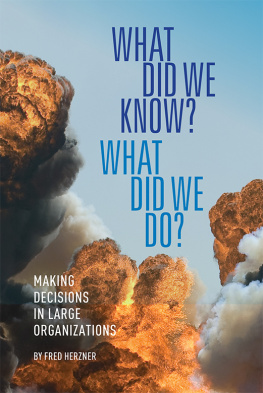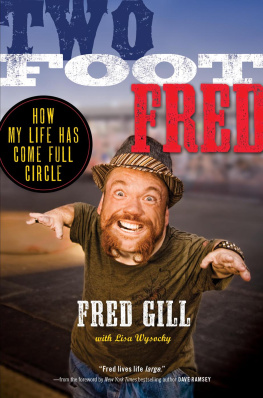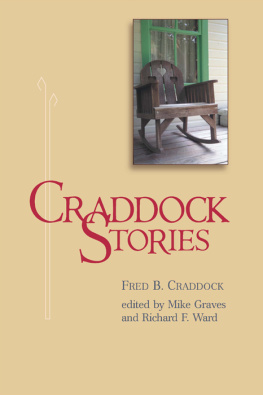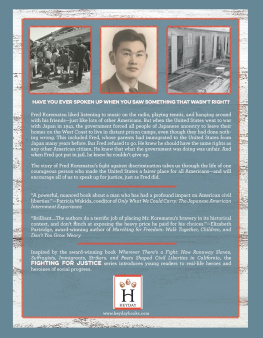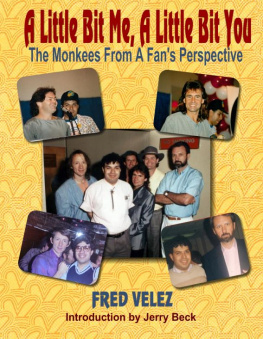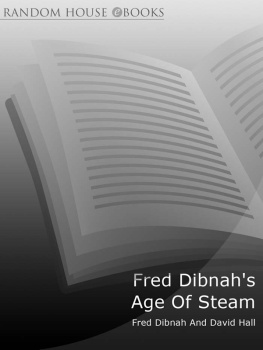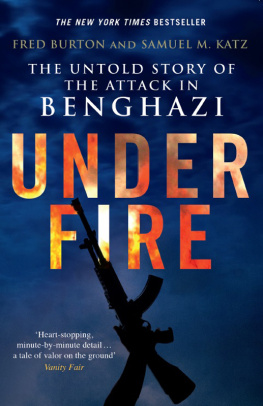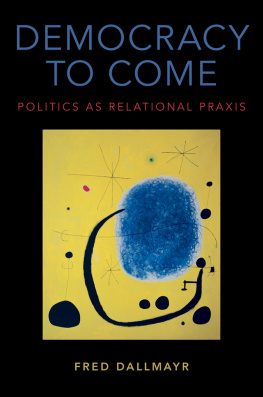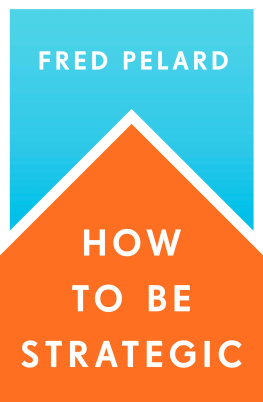Herzner Fred - What Did We Know? What Did We Do?
Here you can read online Herzner Fred - What Did We Know? What Did We Do? full text of the book (entire story) in english for free. Download pdf and epub, get meaning, cover and reviews about this ebook. publisher: Smart Business Network LLC, genre: Religion. Description of the work, (preface) as well as reviews are available. Best literature library LitArk.com created for fans of good reading and offers a wide selection of genres:
Romance novel
Science fiction
Adventure
Detective
Science
History
Home and family
Prose
Art
Politics
Computer
Non-fiction
Religion
Business
Children
Humor
Choose a favorite category and find really read worthwhile books. Enjoy immersion in the world of imagination, feel the emotions of the characters or learn something new for yourself, make an fascinating discovery.
- Book:What Did We Know? What Did We Do?
- Author:
- Publisher:Smart Business Network LLC
- Genre:
- Rating:3 / 5
- Favourites:Add to favourites
- Your mark:
- 60
- 1
- 2
- 3
- 4
- 5
What Did We Know? What Did We Do?: summary, description and annotation
We offer to read an annotation, description, summary or preface (depends on what the author of the book "What Did We Know? What Did We Do?" wrote himself). If you haven't found the necessary information about the book — write in the comments, we will try to find it.
What Did We Know? What Did We Do? — read online for free the complete book (whole text) full work
Below is the text of the book, divided by pages. System saving the place of the last page read, allows you to conveniently read the book "What Did We Know? What Did We Do?" online for free, without having to search again every time where you left off. Put a bookmark, and you can go to the page where you finished reading at any time.
Font size:
Interval:
Bookmark:

What Did We Do?
Organizations
By Fred Herzner
What Did We Know? What Did We Do? Making Decisions In Large Organizations
COPYRIGHT 2017 Fred Herzner
All rights are reserved.
No part of this publication may be reproduced, distributed or transmitted in any form or by any means, including photocopying, recording or other digital or mechanical methods, without the prior written permission of the author, except in the cases of fair use as permitted by U.S. and international copyright laws. For permission requests, please submit in writing to the publisher at the address below:
Published by:
Smart Business Network
835 Sharon Drive, Suite 200
Westlake, OH 44145
Printed in the United States of America
Editor: Dustin S. Klein
ISBN: 978-1-945389-85-6
Library of Congress Control Number: 2017957173
To the passengers and crew of United Airlines Flight 232, July 19, 1989.
In July 1989, United Airlines Flight 232 crashed in Sioux City, Iowa. In total, 111 people lost their lives and numerous others were seriously injured. The accident was initiated by a small metallurgical defect in an engine rotating part. That engine was manufactured by General Electric Aircraft Engines and I was the engineering manager of the group responsible for that part.
This is not a book about the accident. Rather, it is broader than that. This is a story about big, catastrophic events, the decisions that lead up to them, and their resulting consequences. It is also about the things that influence people and organizations to do what they do.
I bring a unique perspective to this because, for several years before the UA 232 accident, I was part of a team that was working on the problem that initiated the event. That deeply affected me. It drove me to look back at what I and others knew prior to the accident to try to understand why this terrible event happened.
Of course, after the accident, there was a flurry of activity to prevent further incidents and determine the root cause of the failure. But what I wanted to know was what underlying factors influenced the people and the organizations to fail to break the chain of events which led up to it. I was particularly focused on my own experience because I felt that had I done something differently, I might have changed the outcome.
Six years after the disaster, I was named the chief engineer of GE Aircraft Engines. Part of that responsibility was to manage the Flight Safety Organization, which had an advisory role on product safety matters. This gave me an opportunity to help structure a formal product safety policy based on my retrospective look at the Sioux City experience.
Then, after my retirement from GE in 2003, I started to see numerous devastating events in the news. These included the BP oil spill, the Flint, Michigan, lead-tainted water scandal, the General Motors ignition switch issue, and the Volkswagen diesel emissions cheating event.
From what I could see and read in the media, these events seemed to have been influenced by some of the same factors that led to the Sioux City accident. But some of these events had influencing factors which were not present in the UA 232 case. In fact, some of those factors were things I had never even thought about during my work tenure.
This made me think that perhaps I could help other organizations benefit not only from what I had learned from UA 232, but also from those recent events as well. So, I examined them and added some of the lessons learned to a set of principles which organizations could use to hopefully avoid such disasters.
Events like these have grave consequences and change the lives of many people. All the organizations that were involvedGE, BP, and VW, among otherspaid dearly. Not only in financial terms, but also in loss of reputation. What I didnt expect was that the people inside those organizations who made the decisions also suffered consequences. I know I did because of my involvement with the UA 232 accident. Those consequences are still with me today.
This is what motivated me to begin writing. In this book, I have attempted to use what I learned from Sioux City and other recent events to propose a set of principles which others can use to avoid similar terrible outcomes. I also want this book to serve as a reminder and motivator for those who work in large organizations that what they do, and how they do it, is important to everyone: the people who use the products; the organizations that make the products and provide jobs; and last, but not least, the employees themselves.
Fred Herzner
Cincinnati
October 2017
The plane that crash-landed in Sioux City, Iowa, on July 19, 1989, was a DC-10-10, powered by GE CF6-6 engines. While this accident cost 111 people their lives, it also changed the lives of the survivors and families of the victims as well. It was a true tragedy. But in events like this, there not only are significant consequences for the victims and their families, but also for the corporations and the employees that produce the products.
The initial consequences for organizations are obvious: ruined reputation, serious financial loss, legal and regulatory sanctions, among other repercussions. But what about employees? Those consequences are a bit more subtle. That is because in cases where lives are lost, such as UA 232, the employees involved may also have doubts about what their role was prior to the event.
How do I know?
Because at the time of the Sioux City accident, I was the engineering manager at GE Aircraft Engines who was responsible for the part that failed. And, prior to the accident, I was a member of an engineering team that was working on an issue which eventually was shown to have initiated that failure.
I must have watched videos of the crash a hundred times. It was so intense that the only words I could think of to describe it were doomsday event. Even today, I still think of the victims and their families.
Immediately after the accident, there was intense media coverage as well as much speculation about the cause. Along with that came what seemed like an army of investigators asking many questions. The chaos subsided relatively quickly, and within several months the National Transportation Safety Board had a firm grasp on the technical reasons why the accident happened. All of this was followed by nine years of litigation, which served to keep those of us who were involved reminded of the tragedy.
I recognized that the technical questions had been answered, but I wanted to know what factors caused myself and the others involved to miss our chance to break the chain of events which led to the accident. GE, United Airlines, and McDonnell Douglas were some of the best companies in the world. I knew that at GE we always tried to do the right thing. Everyone knew safety was of the highest priority, and I never saw anything that would indicate a lack of responsibility or willingness to compromise that. Why did this happen then?
To find an answer, I decided to look back before the accident to see what we knew and what we didor didnt doabout what we knew. Specifically, I wanted to understand the underlying reasons why the people and organizations made the decisions we did and to learn from this so we could avoid such tragic events in the future.
Once again, I learned the lesson that hindsight is wonderful. I found numerous factors that might have influenced us to not recognize the threats. That was true not only at GE, but by others in the industry. This encouraged me to dig deeper into exploring the why and how decisions get made.
Font size:
Interval:
Bookmark:
Similar books «What Did We Know? What Did We Do?»
Look at similar books to What Did We Know? What Did We Do?. We have selected literature similar in name and meaning in the hope of providing readers with more options to find new, interesting, not yet read works.
Discussion, reviews of the book What Did We Know? What Did We Do? and just readers' own opinions. Leave your comments, write what you think about the work, its meaning or the main characters. Specify what exactly you liked and what you didn't like, and why you think so.

